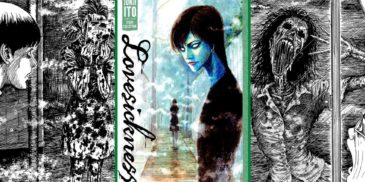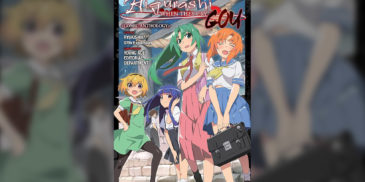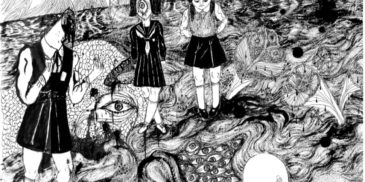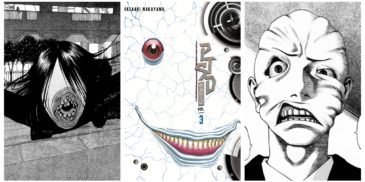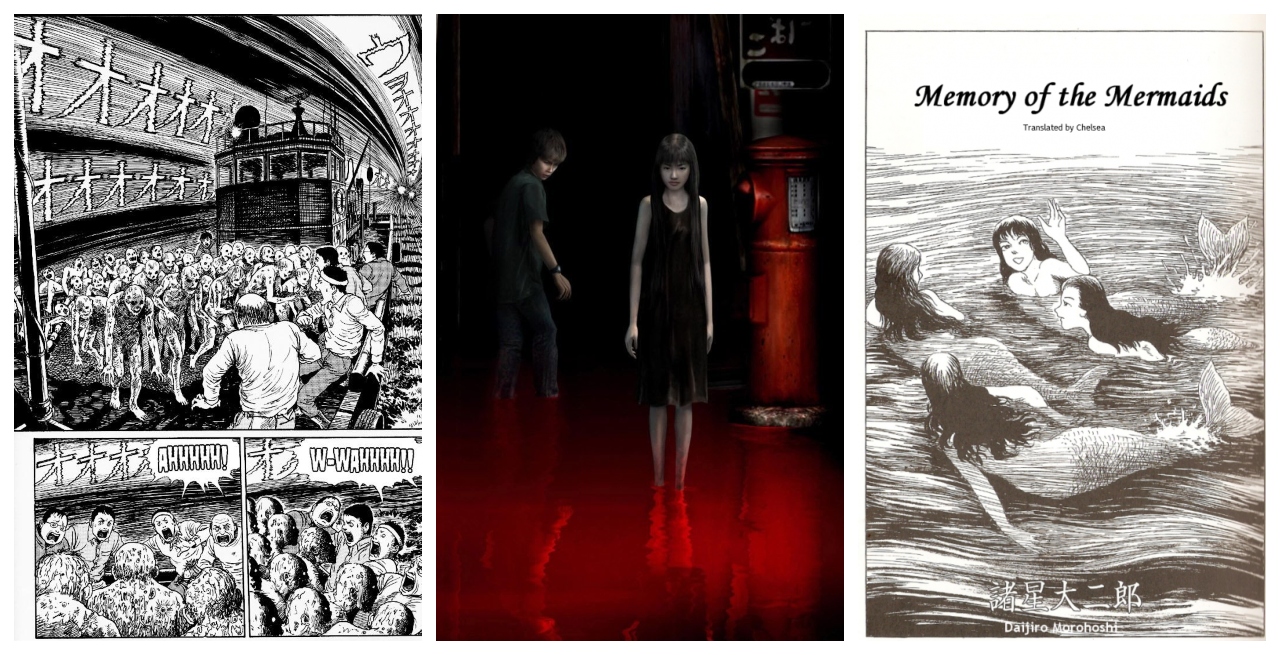
While waiting for the release and review of the volume 5 and 6 of the manga Siren Rebirth, I thought it would be nice to focus on some previous manga around the Forbidden Siren video game franchise. Besides the most recent Siren Rebirth, it’s worth reminding that this horror game series spawned a lot of comic book series, such as Call of the Red Sea, Eternal Siren, or the spin-off Tamon Takeushi’s Research Note. However, the ones we’ll review here are two stand-alone short stories short mangas from the Siren Maniac books, which are a must-read for all Siren fans as it gathers all the behind the scenes information and explores the lore and mythology of the Siren games by the creators themselves. As for the two manga specifically, they were written and drawn by two big names of the J-horror field: Junji Ito and Daijiro Morohoshi.
Demon’s Voice
It’s also quite ironic to see Mr. Ito going back to the theme of the siren. Years ago, he had wrote a collection titled Town without a Street, which contains a story that served as a big inspiration for the Siren games. I had read this story when borrowing Town without a Street in library some time ago, and I remember thinking ,”Oh, this story reminds a lot of the Siren franchise, and yet it was created before.” Reading a story Junji Ito created for the Siren series afterwards felt like a loop was formed from mutual inspirations.
I recommend this story for all fans of the Siren franchise, as well as fans of horror mangas. They don’t reproduce the plots of the games like Siren Rebirth or Call of the Red Sea, but they work very well as side-stories to enrich the lore, like the Siren movie or the short stories also in Siren Maniac books (Mystery of the Bright Win, Strange Tell of Hanuda). As always, I thank Chelsea who translated it from Japanese to English. The next section will explore the other manga: Memory of the Mermaids.
Memory of the Mermaids
Now, I’ll briefly review the second of those two stories: Memory of the Mermaids by Daijiro Morohoshi from Siren Maniac 2 (the guidebook based on the game Forbidden Siren 2). This story takes a relatively different direction than Junji Ito’s Demon’s Voice. More precisely, it leads the reader to follow the investigation of the protagonist, a young boy searching for answers about the mysterious disappearance of his sister when he was young. The only reliable clue he starts with is the dream he keeps having about his sister playing in the water with mermaids. Not as scary as Demon’s Voice (although this is debatable and depends on the reader), this story is still sadder and explores the analogy between sirens and mermaids. It therefore expends the themes and imagery of the second game, but builds its own plot around it. This time there’s also a direct connection with the game Siren 2 since the protagonist’s last name is…Ohta! More of an Easter egg than a real important plot point, it’s good to see these stories never navigate too far from their source material.
Daijiro Morohoshi’s art style is softer than Junji Ito’s, but fits this more restrained story and manages to catch the player off-guard when it comes to creepiness. Indeed, the hero’s journey ominously leads to a disturbing conclusion that isn’t so easy to see coming and that is really twisted. Maybe the best of the two stories in terms of pure narratives, even though the drawing style isn’t as memorable as Ito’s. This nice little piece of lore is recommendable for both Siren fans and fans of horror manga.
Another piece of lore that enriches the mythology of the Siren franchise, just like the Siren movie or the short stories also in Siren Maniac books (Mystery of the Bright Win, Strange Tell of Hanuda). It’s always good to see such extended universe from a series that started as a game and then expended in many ways. Please look forward for the reviews of the volume 5 and 6 of Siren Rebirth. We thank again Chelsea for her translation.
More Manga Reviews
Junji Ito Lovesickness Manga Collection Review
Junji Ito’s at it again with the suicide-filled creepfest that is the Lovesickness collection, and like all of his work, it is worthy of a manga review. Taking its name…
Higurashi: When They Cry – GOU Comic Anthology (2023) Manga Review – A Fun Exploration of the Lighter Side of the Series
Higurashi: When They Cry – GOU Comic Anthology is a 2023 compendium of short stories based on the characters from the original series, featuring an overarching story written by Ryukishi07…
Higurashi: When They Cry – GOU: Volume 2 (2023) Manga Review
Higurashi: When They Cry – GOU is a 2-volume psychological horror manga, written by Ryukishi07/7th Expansion and illustrated by Tomato Akase. Ryukishi07 is a Japanese author, artist, and representative of…
Children Manga Review – The Horror of Broken Youth
How can one not be drawn in by the vague title and a colorful cover art showing a smiling girl surrounded by blood alongside cute items? Honestly, sometimes it is…
KSKHH (2021) Manga Review – Oh What Beautiful Filth!
“Daisuke Ichiba is not a manga artist, he is a drawer of beautiful women!” There are few Japanese underground creators that can hold sway over a select few and never…
PTSD Radio (2010) Manga Review – When reality meets fiction (sort of)
Recently, disturbing news regarding Masaaki Nakayama, a horror manga author known for his manga Fuan no Tane (2013), has been circulating online. According to many social media posts, he has…

Student and former short film maker, Anthony Auzy always loved scary stories and horror content, with a special fondness for Asian horror. It inspires him for poem books, short stories, short films and videos, and other creations. He like to dig hidden findings that may be overlooked or unnoticed, and I enjoy scary Asian games and spooky reads. Besides watching many J-horror movies, he keens on exploring how the movement was born and expanded in different forms of media, and study its cultural impact.
